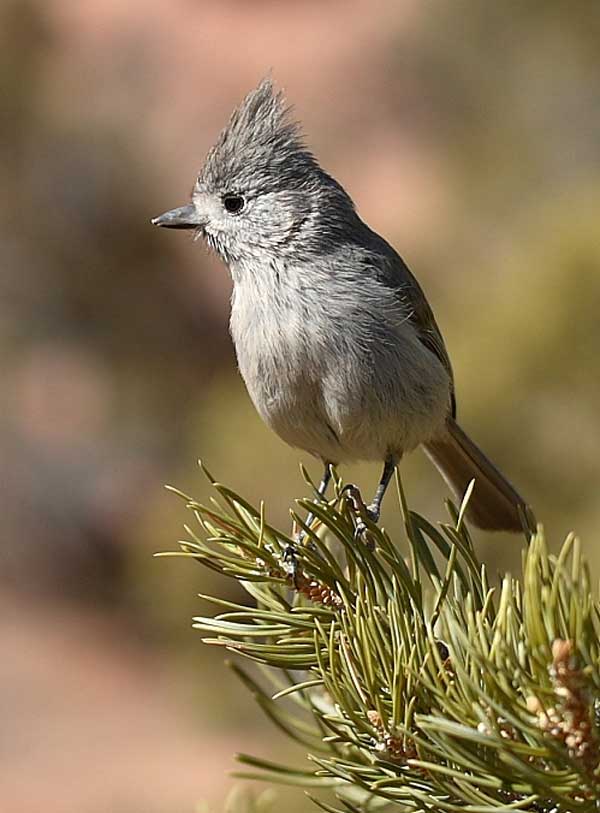
Baeolophus ridgwayi (*)
Superregnum: Eukaryota
Cladus: Unikonta
Cladus: Opisthokonta
Cladus: Holozoa
Regnum: Animalia
Subregnum: Eumetazoa
Cladus: Bilateria
Cladus: Nephrozoa
Superphylum: Deuterostomia
Phylum: Chordata
Subphylum: Vertebrata
Infraphylum: Gnathostomata
Megaclassis: Osteichthyes
Cladus: Sarcopterygii
Cladus: Rhipidistia
Cladus: Tetrapodomorpha
Cladus: Eotetrapodiformes
Cladus: Elpistostegalia
Superclassis: Tetrapoda
Cladus: Reptiliomorpha
Cladus: Amniota
Classis: Reptilia
Cladus: Eureptilia
Cladus: Romeriida
Subclassis: Diapsida
Cladus: Sauria
Infraclassis: Archosauromorpha
Cladus: Crurotarsi
Divisio: Archosauria
Cladus: Avemetatarsalia
Cladus: Ornithodira
Subtaxon: Dinosauromorpha
Cladus: Dinosauriformes
Cladus: Dracohors
Cladus: Dinosauria
Ordo: Saurischia
Cladus: Eusaurischia
Subordo: Theropoda
Cladus: Neotheropoda
Cladus: Averostra
Cladus: Tetanurae
Cladus: Avetheropoda
Cladus: Coelurosauria
Cladus: Tyrannoraptora
Cladus: Maniraptoromorpha
Cladus: Maniraptoriformes
Cladus: Maniraptora
Cladus: Pennaraptora
Cladus: Paraves
Cladus: Eumaniraptora
Cladus: Avialae
Infraclassis: Aves
Cladus: Euavialae
Cladus: Avebrevicauda
Cladus: Pygostylia
Cladus: Ornithothoraces
Cladus: Ornithuromorpha
Cladus: Carinatae
Parvclassis: Neornithes
Cohors: Neognathae
Cladus: Neoaves
Cladus: Telluraves
Cladus: Australaves
Ordo: Passeriformes
Subordo: Passeri
Infraordo: Passerida
Familia: Paridae
Genus: Baeolophus
Species: Baeolophus ridgwayi
Subspecies: B. r. ridgwayi – B. r. zaleptus
Name
Baeolophus ridgwayi (Richmond, 1902)
Synonyms
Parus inornatus ridgwayi (protonym; nom. nov. for Lophophanes inornatus griseus Ridgway, 1882, nom. inval., non Parus griseus Müller, 1776)
Parus ridgwayi
References
Proceedings of the Biological Society of Washington 15: 155.
Vernacular names
English: Juniper Titmouse
Esperanto: Junipera paruo
español: Herrerillo de Ridgway
français: Mésange des genévriers
magyar: Borókacinege
Nederlands: Ridgways mees
Diné bizaad: Diltʼóshii
svenska: Blek gråmes
Tiếng Việt: Bạc má bách xù
The juniper titmouse (Baeolophus ridgwayi) is a passerine bird in the tit family Paridae. The American Ornithologists' Union split the plain titmouse into the oak titmouse and the juniper titmouse in 1996, due to distinct differences in song, preferred habitat, and genetic makeup.[2]
The juniper titmouse is a small, gray bird with small tuft or crest. The face is plain, and the undersides are a lighter gray. Sexes are similar.
This titmouse lives year-round primarily in the Great Basin, but is resident from southeastern Oregon and central Colorado south to the eastern Mojave Desert in California and central Arizona, as far as west Texas and extreme northeastern Sonora, Mexico-(the Madrean sky islands). It prefers open woodlands of warm, dry pinyon-juniper, juniper and desert riparian woods.
Juniper titmice will sleep in cavities, dense foliage, or birdhouses. When roosting in foliage, the titmouse chooses a twig surrounded by dense foliage or an accumulation of dead pine needles, simulating a roost in a cavity. It forms pairs or small groups, but does not form large flocks. It may join mixed-species flocks after breeding season for foraging.
The juniper titmouse eats insects and spiders, sometimes seen catching insects in mid air. It also eats berries, acorns, and some seeds, sometimes hammering seeds against branches to open them. The bird forages on foliage, twigs, branches, trunks, and occasionally on the ground. Strong legs and feet allows it to hang upside down to forage. Juniper titmice visit feeders with suet, peanut butter, and seeds.
The song of the juniper titmouse is a rolling series of notes given on the same pitch. Its call sounds like a raspy tschick-adee.
This species builds its nest in a woodpecker hole, natural cavity, or nest box, lining it with grass, moss, mud, hair, feathers, and fur. It breeds from March into July, with peak activity in April and May, laying 3–9 eggs, usually 4–7. The female is the primary incubator, the process of which takes 14–16 days. Young are altricial, and are tended by both parents in nest for 16–21 days. Parents continue to tend to young for another three to four weeks after the young leave the nest.
The oak titmouse and juniper titmouse appear almost identical, but differ in voice as well as range. The oak titmouse has a browner back than the juniper titmouse. The oak titmouse gives a repeated series of three to seven syllables, each composed of one low and one high note, while the juniper titmouse song consists of a series of rapid syllables on the same note. Ranges overlap only in a small area in California. The tufted titmouse, which does not overlap in range, has whiter belly, rusty flanks, and black on the forehead.
References
BirdLife International (2017). "Baeolophus ridgwayi". IUCN Red List of Threatened Species. 2017: e.T22729143A118836703. doi:10.2305/IUCN.UK.2017-3.RLTS.T22729143A118836703.en. Retrieved 12 November 2021.
Banks, Richard C.; Fitzpatrick, John W.; Howell, Thomas R.; Johnson, Ned K.; Monroe, Burt L.; Ouellet, Henri; Remsen, J. V.; Storer, Robert W. (July 1997). "Forty-first supplement to the American Ornithologists' Union Check-list of North American Birds" (PDF). The Auk. 114 (3): 542–552. doi:10.2307/4089270. JSTOR 4089270.
Further reading
Alsop, Fred J., III (2001): Smithsonian Birds of North America, Western Region. DK Publishing, Inc., New York City. ISBN 0-7894-7157-4
Sibley, David Allen (2000): The Sibley Guide to Birds. Alfred A. Knopf, New York. ISBN 0-679-45122-6
Retrieved from "http://en.wikipedia.org/"
All text is available under the terms of the GNU Free Documentation License

